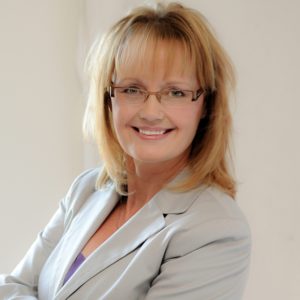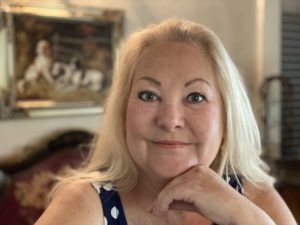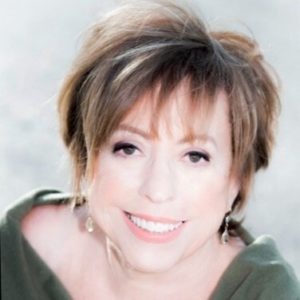One-on-one with… Eileen Malo
The Bon Secours Health System is a not-for-profit Catholic health system established by the Sisters of Bon Secours. Nineteen hospitals, a psychiatric hospital, five skilled nursing facilities, four assisted living facilities, home care and hospices services are all operated under the Bon Secours umbrella of care. The Schervier Nursing Care Center in Riverdale, N.Y., has been part of the Bon Secours family since 2000. Schervier CEO Eileen Malo spoke with Long-Term Living Executive Editor Sandra Hoban about Bon Secours and, in particular, Schervier’s mission and its plans for the future.
WHAT ARE THE ADVANTAGES OF BELONGING TO A HEALTH SYSTEM LIKE BON SECOURS?
Bon Secours is a $3.3 billion dollar not-for-profit Catholic system encompassing acute care, long-term care, senior housing, home care and hospice. We are able to adapt and change to prevailing conditions. If we need to partner with an organization to achieve our goals or to comply with all the rules and regulations aimed at providing care, it is a move that would be considered. On the other hand, if an organization is struggling, it has the strength of other organizations in the system to rely on. For example, if a facility is experiencing financial shortfalls, the resources of the system can help with temporary assistance to ease cash flow problems. It is certainly a better prospect than going it alone.
DESCRIBE THE ORIGINS OF BON SECOURS AND SCHERVIER.
In the late 19th century, an order of German nuns—the Franciscan Sisters of the Poor—settled in Cincinnati. Eventually, they moved to New York City because of their concern for the swelling numbers of immigrants and to bring their message of “good help” [bon secours] and good health.
The sisters began their ministry of care in Manhattan and, in 1931, as the sheer volume of people needing medical help and assistance continued to grow, expanded its organization to the Bronx. The current facility, Schervier Nursing Care Center, is built on a beautiful and spacious site overlooking the Hudson River.
HAS SCHERVIER—A CATHOLIC HEALTHCARE FACILITY–EMBRACED OTHER RELIGIONS AND CULTURES IN NYC’S ETHNICALLY DIVERSE POPULATION?
New York is a very small town when it is broken down into neighborhoods. Riverdale is a predominantly Jewish community. However, Schervier cares for short- and long-term residents of all faiths. We work with everyone. Our staff and administration recognize each individual’s spirituality, not just their religion.
HOW HAS SCHERVIER PREPARED FOR THE GROWING SENIOR POPULATION?
Technology is helping to shape the future of long-term care. Bon Secours has implemented electronic health records (EHR) in all its facilities and it is being introduced into its physicians’ offices. I’m really excited about it because Schervier is actually a pilot site for long-term care implementation.
Training staff and creating buy-in is achievable when employees understand how the EHR can reduce errors and eliminate repetitive copying. Knowledge and information are transferred quickly and accurately. It allows corrections to be made in order to create complete documentation. I believe that if administration is patient with the staff’s learning curve, frustration will be overcome as it was when the MDS started. And the electronic medical record (EMR) will enable quicker and more accurate lab reports, radiological results and so on, all located in one place. As healthcare continues its dramatic evolution, we need to connect electronically with other community providers such as physician practices and hospitals.
WILL THIS HELP TO REDUCE INCIDENTS OF REHOSPITALIZATION?
Absolutely. If you have a more complete and accurate record when providing care, the information on the EHR or EMR may trigger a different choice about discontinuing or changing medications, for example, or modifying care plans. We won’t have to search for information—it’s right at our fingertips.
HOW ELSE DOES SCHERVIER MEET THE DEMANDS FOR LONG-TERM CARE?
Schervier offers a home care program—a CCRC without walls—called the Lombardi program. Named for New York State Senator Tarky Lombardi Jr., the program provides the necessary support and services—care, social and emotional—to keep an elder safe at home. We are currently applying for a certificate of need, so the program can be Medicare-certified.
We are also working with an accountable care organization. Schervier has a huge rehabilitation program, which includes cardiac rehabilitation. We continue to look for ways to expand these services and offer others because it is the future of healthcare.
ARE YOU EXPECTING THE STAFFING CRISIS THAT SOME PEOPLE ARE PREDICTING?
Bon Secours and Schervier want every staff member to meet his or her goals. We offer career-building opportunities and the workers’ union also provides tuition reimbursement and support. Employees are encouraged and provided opportunities to advance within the organization and their personal lives.
We care about our employees as much as we do our residents and clients. Most of the people who work with us, stay with us.

Sandra Hoban was on I Advance Senior Care / Long-Term Living’s editorial staff for 17 years. She is one of the country’s longest-serving senior care journalists. Before joining Long-Term Living, she was a member of the promotions department at Advanstar Communications. In addition to her editorial experience, Sandi has served past roles in print and broadcast advertising as a traffic and talent coordinator.
Related Articles
Topics: Accountable Care Organizations (ACOs) , Articles , Medicare/Medicaid , Technology & IT











